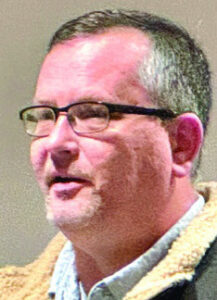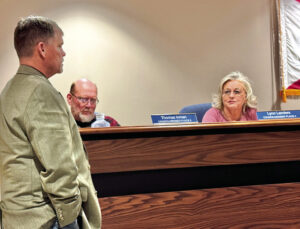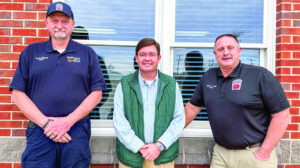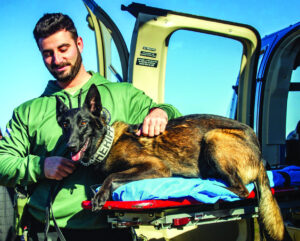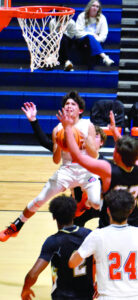RMS students learn shuttle lingo during presentation
Sixth grade students at Russellville Middle School watch as Wendell “Chuck” Williams demonstrates how liquid nitrogen is used by the space shuttle during a launch. | Nathan Strickland/FCT
With only three scheduled launches left and the STS-132 Atlantis shuttle launch scheduled for Friday, Russellville Middle School teacher Karren Sewell thought this week would be a good time to teach her sixth-grade science class about rockets.
Friday students gathered insight from guest speaker and 30-year shuttle engineer with Jacobs Engineering, Wendell “Chuck” Williams, who showed video and demonstrations with different materials and chemicals used in the building and launching of shuttles.
“The firm I worked for, Jacobs Engineering, is one of NASA’s prime contractors,” he said. “I’m semi retired now, but I work part time for them every now and again.”
Williams said his job basically entailed testing materials and processes used for a space shuttle’s infrastructure.
“My specialty was forming the foam portions for a shuttle’s external tank,” he said.
Williams majored in Chemistry in college, but Sewell advised her students that there are many different areas students can pursue in college and still work for NASA.
Williams said this is the fist time he has ever visited the Russellville are to speak to students about his profession.
“I know there are some presentations of this caliber presented to students in the Huntsville area,” he said. “But this is the first time I have ever been to this area to visit the schools in Alabama.”
Williams gave students a glimpse at the capabilities of liquid nitrogen and explained its usage during shuttle launch time.
He also shared his specialty of creating foam used to protect a shuttle’s external tank.
To form the foam, Williams used the chemicals Isocyanate and Polyol, which created a reaction forming the type of foam used by NASA engineers for shuttle construction.
“The chemical reaction of these to chemicals slowly form the foam and we in turn shape the foam into whatever we need,” he told students as they watched in amazement.
Sewell said it is important to teach her students this part of science because one day they very well could be making history.
“Every shuttle launch is history in the making,” she said. “And I just want to give my students the opportunity to witness it and someday actually play a role in making history in the future.”
Next week, Sewell’s class will be designing their own rockets out of two liter soda bottles to launch next week.


